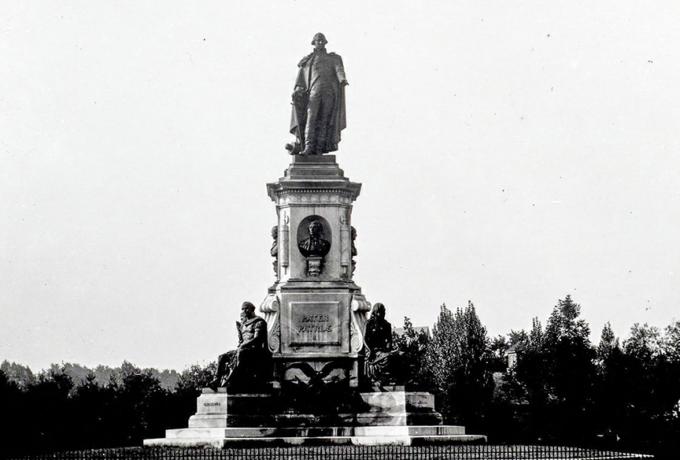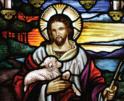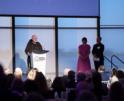
Culture

It has often been written that Thomas Ball's Washington statue was removed from Methuen to make way for St. Monica School, but historic records reveal a different story.
Earlier this year, the archive department received an inquiry about a famous statue of George Washington that once stood on the land that is now home to St. Monica School in Methuen. Since the statue was removed from Methuen 65 years ago this July, we thought it a good time to tell a brief history of the colossal monument that once loomed large in the Merrimack Valley.
In 1883, in his studio in Florence, Italy, the Charlestown-born sculptor Thomas Ball began work on a new statue of George Washington. His resume was already impressive; he had created bronze statues of such dignitaries as Daniel Webster (1868) and Charles Sumner (1878). His "Equestrian Statue of George Washington" (1864) on Boston Common was among the city's most prized artistic treasures. Yet, this new statue would be his most ambitious and complex work to date.
The work would take Ball 10 years to complete. When it was finished, the monument consisted of a 15-foot bronze statue of the first president, four seated figures, four portrait busts, and four eagles flanked by flags, all displayed on a tiered marble base. Though not universally acclaimed by critics (The Nation called it "a mediocrity, or worse"), it was accepted for display at the 1893 Chicago World's Fair, becoming the centerpiece of the International Rotunda in the Fine Arts Building.
After the World's Fair, the statue returned to the man who had bought it: the interior and architectural designer Edward Francis Searles, an eccentric multimillionaire living in Methuen. During a trip to Italy, Searles had seen the partially completed statue in Thomas Ball's studio, and offered to purchase it upon completion. He envisioned the statue as the centerpiece of the park he had installed across the street from his estate on Lawrence Street in Methuen. After the completion of the statue's pedestal in 1900, The Boston Globe reported, "the gates of the little park . . . Were thrown open on Washington's birthday, unannounced, and the public was admitted to view this beautiful art work."
For 20 years, the statue sat behind a granite wall and a high iron fence, open to the public only occasionally, depending on the whims of its wealthy owner. When Edward Searles died in 1920, the park passed to one of his relatives, Benjamin Allen Rowland, who held the property for decades. Over the years, art collectors, institutions, and even governments were interested in purchasing the statue from Rowland, but both the price tag (in 1925, the statue was valued at $250,000) and the logistics of moving the monument proved too daunting.
It was not until the 1950s that the statue would be transferred to new owners. In 1955, Benjamin Rowland, who had moved from Methuen to Washington, D.C., to serve as special assistant to the secretary of the department of commerce, offered the Washington Park property as a gift to the city of Methuen, with the stipulation that the site be used for a school. The city rejected the offer, considering the lot too limited in size for a public school.
When Father Thomas F. Ferris, the pastor of St. Monica Church, heard about the city's rejection of the land, he immediately penned a letter to Benjamin Rowland. St. Monica's was located adjacent to Washington Park, and the parish was then searching for an appropriate parcel on which to build a parochial school. Since Father Ferris's proposal to build a school on the land was at least partially in accordance with Rowland's wishes, in April of 1956, Rowland agreed to sell the land to the archdiocese for $16,000.
It has often been written that Thomas Ball's Washington statue was removed from Methuen to make way for St. Monica School, but historic records reveal a different story.
St. Monica's wanted very much to keep the Washington statue. Father Ferris, in particular, appreciated the importance of the statue to the city and made every effort to keep it. In August of 1956, Father Ferris telephoned the chancery and left a message with the chancellor's secretary that reads, in part, "This is a very famous statue and Father is of the opinion that the sentiment of the Town would be against selling. It really is a town landmark . . . Father does not think he should sell it but feels that the statue should be kept and that the school can be built around it."
In September, Father Ferris contacted the chancellor, Msgr. Robert J. Sennott, again. This time, it came in the form of a letter.
"I have given much thought to the sale. I have sounded out the sentiment of members of my parish. . . It is my opinion that this valuable monument would add greatly to the church school. I do not believe we should give it up," Father Ferris wrote.
Msgr. Sennott replied on Oct. 10 that "His Excellency (Archbishop Richard Cushing) has decided to follow your judgment in the matter."
The statue would remain.
Ground was broken for St. Monica School in October 1957 and construction began immediately. Workers built around the Washington monument, and great care was taken not to damage the statue or its base. The statue was to be the centerpiece of the school, standing just out front in a central court.
Unfortunately, during construction, when the statue was examined by the school's engineers, they found that decades of New England weather had so deteriorated the marble base of the monument that the integrity of the statue itself was at risk. Repairs would be extremely costly, as would the ongoing care required to ensure that structural problems would not persist
Reluctantly, the archdiocese reached out to those who had expressed interest in purchasing the statue, including Forest Lawn Cemetery in Hollywood Hills, California. Although the statue would no longer be in Methuen, it would, at least, remain on public display. And, of course, the California weather would be kinder to it than the Massachusetts winters. On July 3, 1958, Forest Lawn purchased the statue for $10,000, removing it to its new home within the month. Thomas Ball's statue remains on display there to this day, overlooking the graves of such celebrities as Bette Davis, Lucille Ball, and Liberace.
VIOLET HURST IS AN ARCHIVIST FOR THE ARCHDIOCESE OF BOSTON.
Recent articles in the Culture & Events section
-
Scripture reflection for May 12, 2024, Seventh Sunday of EasterDeacon Greg Kandra
-
The 1924 convention of Catholic Students' Mission CrusadeThomas Lester
-
Political decision year aheadRussell Shaw
-
The example of the Good ShepherdMichael Reardon
-
Spring Celebration Gala will honor Cardinal O'MalleyShannon Lyons


















